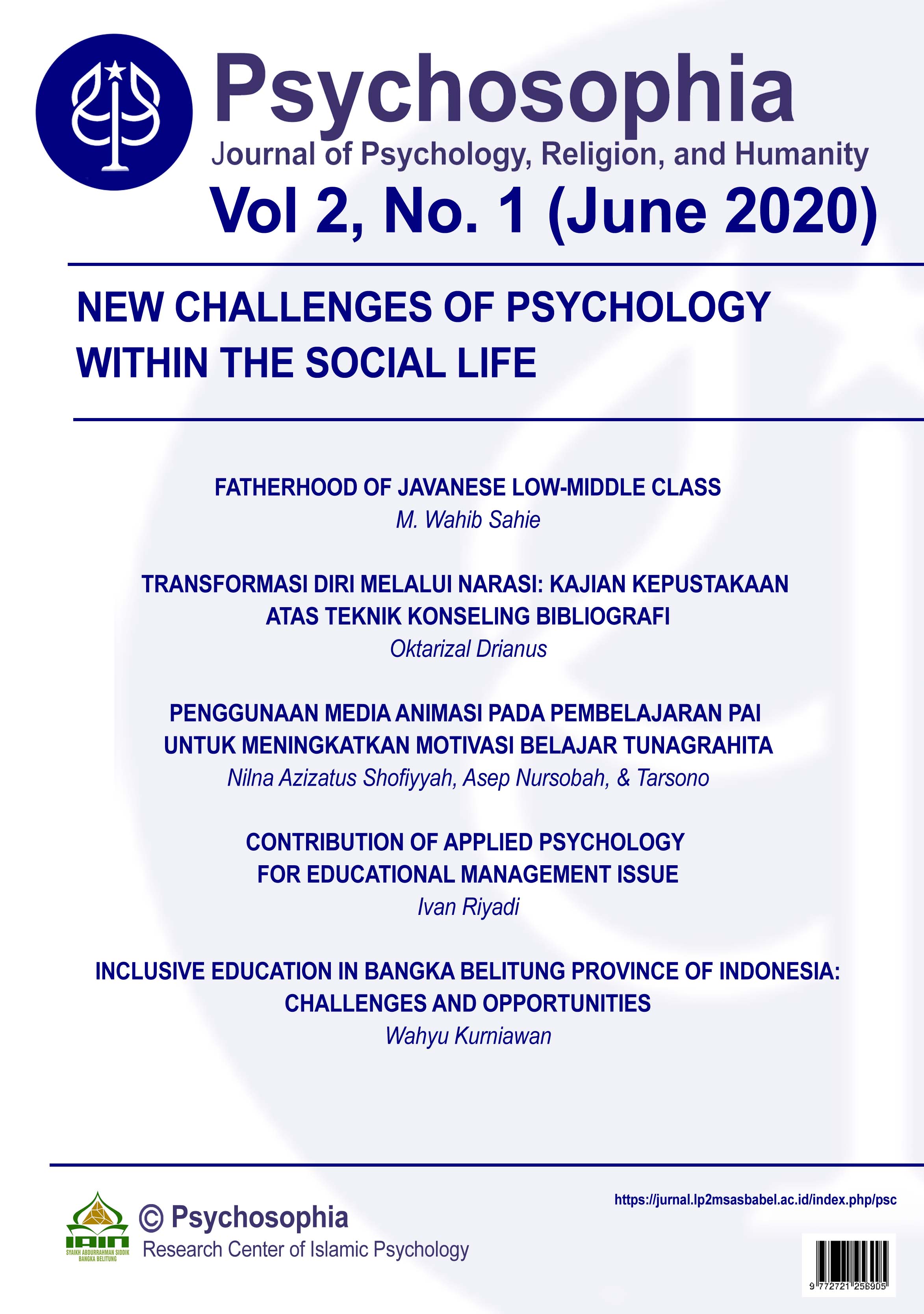PENGGUNAAN MEDIA ANIMASI PADA PEMBELAJARAN PAI UNTUK MENINGKATKAN MOTIVASI BELAJAR TUNAGRAHITA
DOI:
https://doi.org/10.32923/psc.v1i2.1157Keywords:
Islamic education, mentally retarded, media animationAbstract
The purpose of this study to explain the validation, implementation, factors, and effectiveness of animation media products in Islamic Religious Education Learning to improve learning motivation for children with developmental disabilities in SLB Angkasa Lanud Sulaiman. This type of research is a qualitative case study approach, taking place in SLB Angkasa Lanud Sulaiman. The results showed: 1) The validation of animated media products in Islamic learning PAI material was 94.1 and 91.4 If converted into an evaluation table the results of expert trials included in the "very good" criteria. 2) Implementation of PAI learning using animation media follows the steps made in the learning implementation plan. 3) Supporting factors that influence the learning of PAI using animation media are the ease of the animation media themselves to be used and the display of animated media which makes intellectual children easily understand the PAI material delivered, such as the pillars of Islamic principles. The inhibiting factor is the cost to access the animation media. 4) The level of success is shown in the value of mentally disabled students through reports on learning outcomes for mentally retarded students who get an average value of 80 of minimal completeness criteria of 75.
Downloads
Published
Issue
Section
License
Copyright Notice
The Psychosophia: Journal of Psychology, Religion, and Humanity is under the Creative Commons Attribution 4.0 International (CC-BY 4.0) License, according to which:
1) Authors retain copyright and grant the journal the right to first publication, with the work simultaneously licensed under the Creative Commons Attribution (CC-BY 4.0) that allows the sharing of articles published with the acknowledgment of authorship and the initial publication in this journal.
2) The authors are authorized to make additional contracts separately for distribution of the version of the work published in this journal (for example, publication in an institutional repository or as a chapter of the book), as long as there is recognition of authorship and initial publication in this journal.
3) Authors are authorized and encouraged to publish and distribute their work online (for example, in institutional repositories or on their personal pages) at any time before or during the editorial process, as it increases the impact and reference of the published work.






